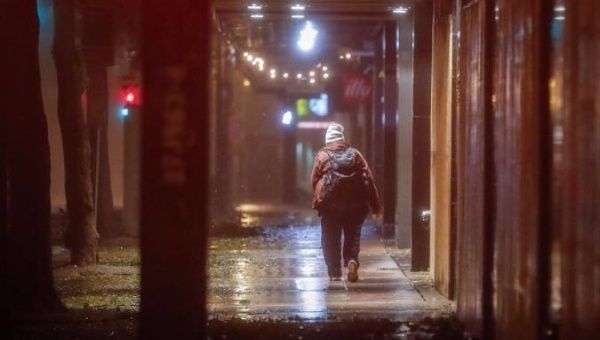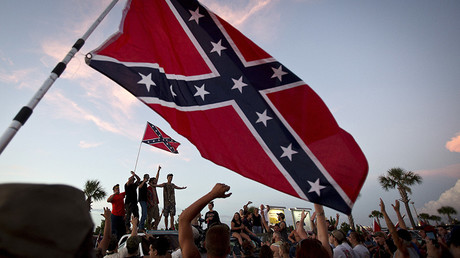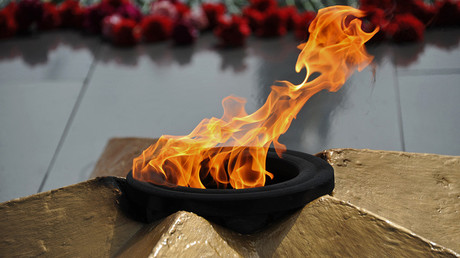Selected Works of Mao Tse-tung
U.S. IMPERIALISM IS A PAPER TIGER
July 14, 1956
[Part of a talk with two Latin-American public figures.]
https://www.marxists.org/reference/archive/mao/selected-works/volume-5/mswv5_52.htm
The United States is flaunting the anti-communist banner everywhere in order to perpetrate aggression against other countries
The United States owes debts everywhere. It owes debts not only to the countries of Latin America, Asia and Africa, but also to the countries of Europe and Oceania. The whole world, Britain included dislikes the United States. The masses of the people dislike it. Japan dislikes the United States because it oppresses her. None of the countries in the East is free from U.S. aggression. The United States has invaded our Taiwan Province. Japan, Korea, the Philippines, Vietnam and Pakistan all suffer from U.S. aggression, although some of them are allies of the United States. The people are dissatisfied and in some countries so are the authorities.
All oppressed nations want independence.
Everything is subject to change. The big decadent forces will give way to the small new-born forces. The small forces will change into big forces because the majority of the people demand this change. The U.S. imperialist forces will change from big to small because the American people, too, are dissatisfied with their government.
In my own lifetime I myself have witnessed such changes. Some of us present were born in the Ching Dynasty and others after the 1911 Revolution.
The Ching Dynasty was overthrown long ago. By whom? By the party led by Sun Yat-sen, together with the people. Sun Yat-sen’s forces were so small that the Ching officials didn’t take him seriously. He led many uprisings which failed each time. In the end, however, it was Sun Yat-sen who brought down the Ching Dynasty. Bigness is nothing to be afraid of. The big will be overthrown by the small. The small will become big. After overthrowing the Ching Dynasty, Sun Yat-sen met with defeat. For he failed to satisfy the demands of the people, such as their demands for land and for opposition to imperialism. Nor did he understand the necessity of suppressing the counter-revolutionaries who were then moving about freely. Later, he suffered defeat at the hands of Yuan Shih-kai, the chieftain of the Northern warlords. Yuan Shih-kai’s forces were larger than Sun Yat-sen’s. But here again this law operated: small forces linked with the people become strong, while big forces opposed to the people become weak. Subsequently Sun Yat-sen’s bourgeois-democratic revolutionaries co-operated with us Communists and together we defeated the warlord set-up left behind by Yuan Shih-kai.
Chiang Kai-shek’s rule in China was recognized by the governments of all countries and lasted twenty-two years, and his forces were the biggest. Our forces were small, fifty thousand Party members at first but only a few thousand after counter-revolutionary suppressions. The enemy made trouble everywhere. Again this law operated: the big and strong end up in defeat because they are divorced from the people, whereas the small and weak emerge victorious because they are linked with the people and work in their interest. That’s how things turned out in the end.
During the anti-Japanese war, Japan was very powerful, the Kuomintang troops were driven to the hinterland, and the armed forces led by the Communist Party could only conduct guerrilla warfare in the rural areas behind the enemy lines. Japan occupied large Chinese cities such as Peking, Tientsin, Shanghai, Nanking, Wuhan and Canton. Nevertheless, like Germany’s Hitler the Japanese militarists collapsed in a few years, in accordance with the same law.
We underwent innumerable difficulties and were driven from the south to the north, while our forces fell from several hundred thousand strong to a few tens of thousands. At the end of the 25,000-li Long March we had only 25,000 men left.
In the history of our Party many erroneous “Left” and Right lines have occurred. Gravest of all were the Right deviationist line of Chen Tu-hsiu and the “Left” deviationist line of Wang Ming. Besides, there were the Right deviationist errors committed by Chang Kuo-tao, Kao Kang and others.
There is also a good side to mistakes, for they can educate the people and the Party. We have had a good many teachers by negative example, such as Japan, the United States, Chiang Kai-shek, Chen Tu-hsiu, Li Li-san, Wang Ming, Chang Kuo-tao and Kao Kang. We paid a very high price to learn from these teachers by negative example. In the past, Britain made war on us many times. Britain, the United States, Japan, France, Germany, Italy, tsarist Russia and Holland were all very interested in this land of ours. They were all our teachers by negative example and we were their pupils.
During the War of Resistance, our troops grew and became 900,000 strong through fighting against Japan. Then came the War of Liberation. Our arms were inferior to those of the Kuomintang. The Kuomintang troops then numbered four million, but in three years of fighting we wiped out eight million of them all told. The Kuomintang, though aided by U.S. imperialism, could not defeat us. The big and strong cannot win, it is always the small and weak who win out.
Now U.S. imperialism is quite powerful, but in reality it isn’t. It is very weak politically because it is divorced from the masses of the people and is disliked by everybody and by the American people too. In appearance it is very powerful but in reality it is nothing to be afraid of, it is a paper tiger. Outwardly a tiger, it is made of paper, unable to withstand the wind and the rain. I believe the United States is nothing but a paper tiger.
History as a whole, the history of class society for thousands of years, has proved this point: the strong must give way to the weak. This holds true for the Americas as well.
Only when imperialism is eliminated can peace prevail. The day will come when the paper tigers will be wiped out. But they won’t become extinct of their own accord, they need to be battered by the wind and the rain.
When we say U.S. imperialism is a paper tiger, we are speaking in terms of strategy. Regarding it as a whole, we must despise it. But regarding each part, we must take it seriously. It has claws and fangs. We have to destroy it piecemeal. For instance, if it has ten fangs, knock off one the first time, and there will be nine left, knock off another, and there will be eight left. When all the fangs are gone, it will still have claws. If we deal with it step by step and in earnest, we will certainly succeed in the end.
Strategically, we must utterly despise U.S. imperialism. Tactically, we must take it seriously. In struggling against it, we must take each battle, each encounter, seriously. At present, the United States is powerful, but when looked at in a broader perspective, as a whole and from a long-term viewpoint, it has no popular support, its policies are disliked by the people, because it oppresses and exploits them. For this reason, the tiger is doomed. Therefore, it is nothing to be afraid of and can be despised. But today the United States still has strength, turning out more than 100 million tons of steel a year and hitting out everywhere. That is why we must continue to wage struggles against it, fight it with all our might and wrest one position after another from it. And that takes time.
It seems that the countries of the Americas, Asia and Africa will have to go on quarrelling with the United States till the very end, till the paper tiger is destroyed by the wind and the rain.
To oppose U.S. imperialism, people of European origin in the Latin-American countries should unite with the indigenous Indians. Perhaps the white immigrants from Europe can be divided into two groups, one composed of rulers and the other of ruled. This should make it easier for the group of oppressed white people to get close to the local people, for their position is the same.
Our friends in Latin America, Asia and Africa are in the same position as we and are doing the same kind of work, doing something for the people to lessen their oppression by imperialism. If we do a good job, we can root out imperialist oppression. In this we are comrades.
We are of the same nature as you in our opposition to imperialist oppression, differing only in geographical position, nationality and language. But we are different in nature from imperialism, and the very sight of it makes us sick.
What use is imperialism? The Chinese people will have none of it, nor will the people in the rest of the world. There is no reason for the existence of imperialism.



























